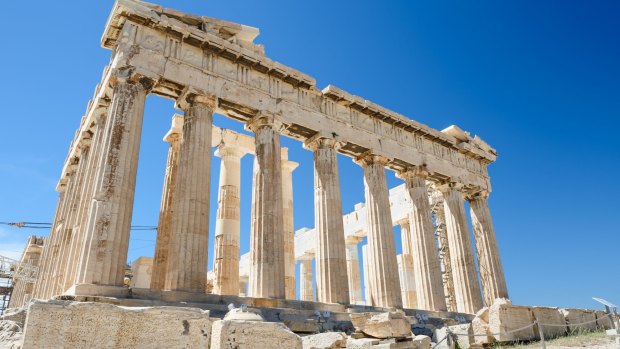This was published 4 years ago
What was the world's first travel guidebook?
By Michael Gebicki

Fragment of the Parthenon, an archaic temple located on the Acropolis of Athens, built in 438 BC. Taken in Athens, Greece. Credit: iStock
Many have claimed the title, but it's hard to go past the works of the Greek geographer Pausanias, who wrote Hellados Periegesis, "Description of Greece" in the second century AD.
In 10 volumes that chart two decades of wanderings through the Peloponnese and Asia Minor, including sites such as Athens, Delphi, Mycenae and Olympia, Pausanias takes the reader by the hand through some of the marvels of the ancient world, many of which now exist only as fragmented memories.
This is not a guidebook in the modern sense, which would recommend places to eat and where to stay, simply because there weren't any.
Pausanias is focused on what is to be seen and understood.
Yet along with the scholarly descriptions of temples and sculptures, this is also a cultural analysis, and Pausanias is a keen-eyed observer.
Ancient rituals, myths, laws, festivals and natural wonders are all grist for his mill, but even so it's tough going.
Reading Pausanias today is like travelling with an incredibly knowledgeable old boffin, but one who occasionally charms you with bits of folklore that bring a place to life.
Sign up for the Traveller newsletter
The latest travel news, tips and inspiration delivered to your inbox. Sign up now.